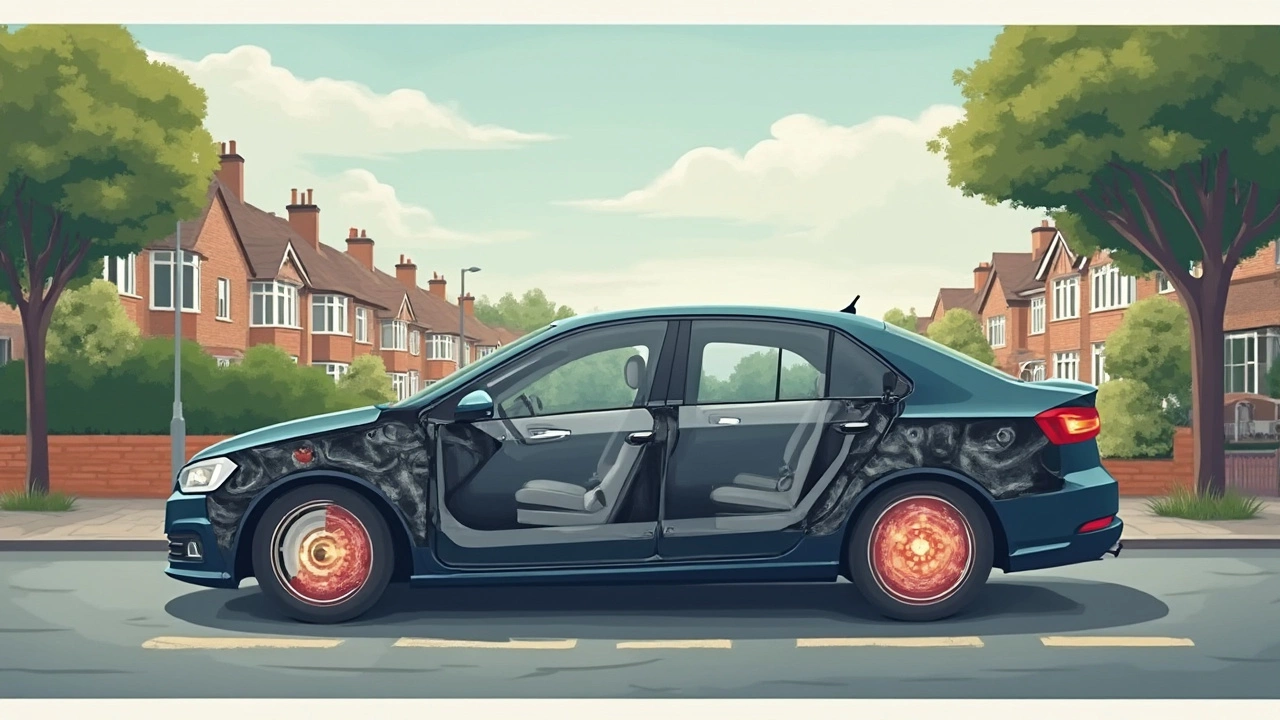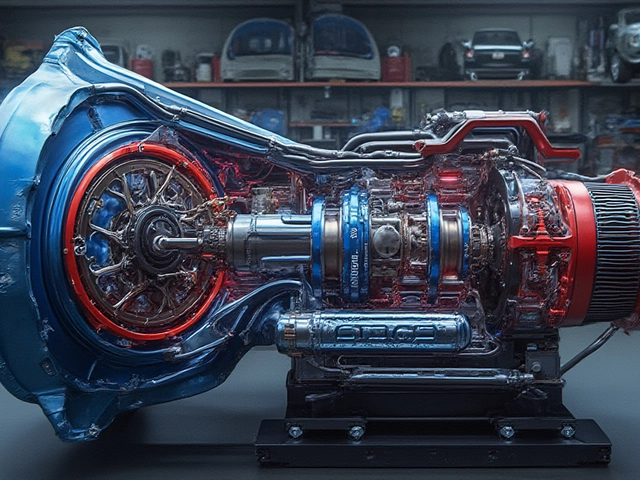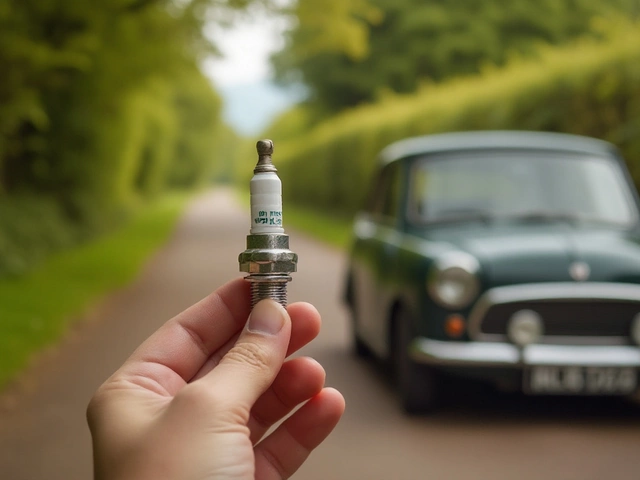If you've ever wondered if your car's front or rear brake pads give up first, here's the quick answer: it's almost always the front brakes. There's a reason for this—and it has nothing to do with car makers trying to squeeze more cash out of you. Every time you hit the brakes, your car's weight gets pushed forward. That extra load means the front brakes do most of the heavy lifting; they work harder, so naturally, they wear out faster.
But that's not the whole story. Brake pad life depends on how you drive, the roads you tackle, and the type of car you own. Some sporty cars have trickier brake setups that split the work differently, and hybrids usually rely more on regenerative braking, meaning their main pads can last longer.
Don't put off checking your brakes until you hear that classic squeal—by then, you're not protecting your rotors or your wallet. Give your pads a look every time you rotate your tires, or roughly every six months. Enough people ignore this and end up with pricier repairs than they bargained for.
- Why the Front Brakes Usually Wear Faster
- Factors That Speed Up Brake Pad Wear
- Common Signs Your Brake Pads Need Attention
- Tips to Make Your Brake Pads Last Longer
Why the Front Brakes Usually Wear Faster
The front brakes do most of the stopping in your car—period. When you press the brake pedal, your car’s weight shifts forward. This extra weight in the front means the front wheels need way more braking power to bring you to a halt. That’s why most vehicles send about 60–80% of the stopping force to those front wheels. So if you’re seeing uneven wear, it’s not because your car is broken—it’s just how physics works.
Here’s a quick look at the numbers:
| Brake Position | % of Braking Force | Typical Pad Lifespan (miles) |
|---|---|---|
| Front | 60–80% | 25,000 – 50,000 |
| Rear | 20–40% | 45,000 – 65,000 |
Take a normal midsize car for example. The front brake pads are generally chunkier than the rear ones to handle all that extra heat and friction. Ever noticed how the front wheels are always dirtier? That dark grime is brake dust from the pads wearing down. It’s like your car’s way of showing just how hard those front pads are working.
Vehicles with front-wheel drive pile on even more stress to front brake pads. Not only do these pads stop the car, but they also help with steering and carry the drivetrain load. Even SUVs and trucks aren’t immune—the heavier the ride, the more work the front brakes do.
Bottom line: if you want to maximize the life of your front brakes, regular checks make a difference. Get in the habit of popping off your front wheels for a peek at the pads. If you spot that they’re much thinner than the rear ones, it’s normal. But if you ignore them, you’re asking for trouble (and a bigger repair bill).
Factors That Speed Up Brake Pad Wear
Wondering why some cars seem to chew through brake pads faster than others? It’s not just about how much you drive. The way you use your brakes makes a huge difference. Let’s break down what really eats up your pads.
Front brakes work the hardest in most cars. But if you’re heavy on the pedal, you’ll wear them out even faster. Take, for example, people who slam on their brakes hard at every stoplight or ride their brakes going downhill. That heat builds up and wears pads down quick.
- Driving habits: Aggressive stops and constant braking kill brake pads. Smooth drivers can get twice as much life from the same set compared to drivers who brake hard every time.
- Traffic conditions: Stop-and-go traffic isn’t just bad for your patience. Every stop, your pads are doing their job and slowly wearing away. City drivers change pads way more often than folks cruising quiet country roads.
- Load and towing: Carrying extra weight or pulling a trailer makes your brakes work overtime. More weight means more energy to stop, and that burns through the pads faster.
- Brake pad material: Not all pads are created equal. Cheap organic pads don’t last as long as ceramic or semi-metallic ones, though each type has its pros and cons.
- Driving environment: Hilly areas mean more constant braking, especially on those long downhill stretches. In comparison, flat highways wear pads way less.
If you don’t believe how much your situation matters, just check out this simple comparison of brake pad life for different scenarios:
| Scenario | Typical Brake Pad Life (Miles) |
|---|---|
| Highway driving | 50,000 - 70,000 |
| City driving | 25,000 - 35,000 |
| Mountain/hilly driving | 20,000 - 30,000 |
| Towing regularly | 15,000 - 25,000 |
If you notice your brake pads wearing out quicker than claimed by your car manual, take a hard look at the way and the places you drive. Sometimes just switching to ceramic pads or backing off the pedal a bit can double the life of your pads. Your wallet will thank you, trust me.

Common Signs Your Brake Pads Need Attention
Your brakes might not send a calendar invite when they’re worn, but they sure drop hints. Knowing what to look for keeps you safe and saves money. Here are the signs your brake pads are begging for attention:
- Squealing or Screeching: Most brake pads come with a built-in wear indicator—basically a tiny metal tab that makes noise when the pads get thin. If your brakes sing every time you slow down, that’s the tab scraping your rotor, which means it’s time for a change.
- Grinding: If you hear what sounds like metal-on-metal grinding, you’ve probably worn right through the pad. Now the pad backing is chewing up your rotor. Don’t ignore this—it turns a cheap fix into a wallet-buster fast.
- Longer Stopping Distance: Does it feel like you need to push the pedal farther, or get more “oomph” to stop? Worn brake pads lower your car’s stopping power, so you might blow through a stop sign just because your pads said “nah.”
- Vibration or Pulsing Pedal: If you feel shuddering or a pulsing pedal when you brake, the pads may be shot or the rotors might be warped. Either way, it’s not normal and needs a look, pronto.
- Visual Check: You don’t always need to guess. Look through the wheel spokes. If the pad’s less than a quarter inch thick (about the size of two stacked quarters), it’s ready to retire.
- Dashboard Warning Light: Newer cars sometimes flash a brake warning light when your pads dip too low. Ignore this, and you’re playing with fire.
What’s typical? Check out average brake pad lifespans from different driving styles and cars:
| Driving Situation | Average Pad Life (miles) |
|---|---|
| City/Stop-and-Go | 20,000 – 30,000 |
| Highway/Mostly Cruising | 35,000 – 60,000 |
| Performance Cars | 15,000 – 25,000 |
| Hybrids w/ Regen Braking | Up to 80,000 |
Short story: Listen, look, and don't ignore weird symptoms. Early action on brake pad problems almost always saves you from pricier repairs and keeps you and everyone else on the road safer.
Tips to Make Your Brake Pads Last Longer
Replacing brake pads more often than you need to? You don’t have to just accept it—how you drive and care for your brakes makes a big difference. Here are some solid habits and tips that can keep your front brakes and rear pads rolling along for more miles.
- Don’t ride your brakes: Lots of folks keep their foot on the brake pedal, especially going downhill. Only brake when you actually need to, and let coasting slow you down when possible.
- Leave enough space: If you tailgate, you brake more often. Back up a bit and you’ll stop less and ease the stress on your pads.
- Brake gently: Slamming on the brakes eats pads faster. Try to slow down with steady, gradual pressure instead of sudden stops.
- Lighten your load: Hauling extra weight—think stuff in your trunk or heavy cargo—makes your brakes work overtime. Keep only what you need in your car.
- Flush brake fluid: Old, dirty brake fluid reduces your brakes’ efficiency. Changing it, usually every 2 years or 24,000 miles, helps pads last.
- Get regular inspections: Don’t wait for squeaks. An honest mechanic can spot wear and tear before it becomes a pricey fix.
Avoiding harsh braking isn’t just about saving pads—your rotors and calipers will last longer too, keeping your maintenance costs down. And speaking of maintenance, here’s a quick look at how long brake pads last on average, depending on common habits and conditions:
| Driving Style/Condition | Average Brake Pad Life (miles) |
|---|---|
| Mostly highway driving (gentle braking) | 60,000+ |
| City/stop-and-go traffic | 30,000 - 40,000 |
| Aggressive driving (hard, frequent stops) | 15,000 - 20,000 |
Bottom line: baby your brakes and you’ll see the difference in both performance and your wallet. My own brake pads usually last longer because I drive like Rufus walks—no hurry and plenty of stopping for the fun stuff, not panic brakes at the last second.






